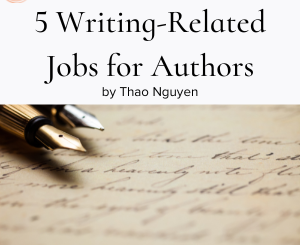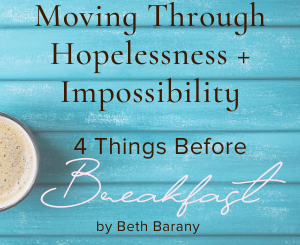Editing Your Novel: What Kind of Feedback Would You Like? by Willow Woodford
 Let’s welcome back monthly columnist Willow Woodford as she shares with us: “Editing Your Novel: What Kind of Feedback Would You Like?” Enjoy!
Let’s welcome back monthly columnist Willow Woodford as she shares with us: “Editing Your Novel: What Kind of Feedback Would You Like?” Enjoy!
***
It’s a question asked in critique groups everywhere.
It’s usually met with blank stares, shoulder shrugs, and “kitchen sink edits, throw it all at me.”
Your critique partners will be left wondering what to comment on. And their feedback will often leave you feeling overwhelmed and confused on how to apply what they told you. (I’m mostly talking about myself here.)
So, let’s talk about editing today.
According to Reedsy, there are 9 types of editing; developmental, editorial, structural, copy editing, line editing, proofreading, fact checking, indexing, and formatting.
At the end of this article I’ll offer a brief explanation of each of them. For now, let’s talk about your needs.
A little while back I offered some thoughts about critique and how to accept it with grace.
Today I’m going to focus specifically on the many types of editing available and how they differ from each other. It’s important to know the difference so you can ask for the right one no matter who offers your feedback.
Feedback from a Critique Group

Writing group- Image by StartupStockPhotos from Pixabay
A critique group is usually a small group of friends who share work with each other and offer feedback to help you strengthen your writing. Critique groups are not just for beginners!
Brandon Sanderson still participates in a critique group, and CS Lewis and JR Tolkien often discussed work with each other and their peers.
Your critique group is good for help with developmental editing, some structural editing, pace and prose.
Developmental and structural editing can be big picture issues, so if you want this from your critique partners remember to offer them an outline or expect to wait as they become familiar with your story, especially if it’s long.
Pacing is easier to manage in short passages and chapters. Though the general pacing of an entire novel will be hard to handle in a critique group, since you don’t usually read the entire thing in one session. Again, a good, detailed outline can help, as long as it’s accurate.
Prose is the best use of a critique group, besides general story ideas and development. Beth Barany calls it massaging the words. That is, helping a passage, or bit of dialog be the best it can be. If you read a section and it feels flat to you, it will be a black hole for your reader, and you will lose them in it.
Feedback from Writing Coaches

Coach- Image by Jan Steiner from Pixabay
A writing coach can help with the same issues as a critique group and offer more support in the area of developmental and structural editing. They will generally read longer sections of your manuscript at one go and be able to offer more feedback about those aspects.
A coach can, and usually will, offer pacing and prose feedback. Especially the pacing of the entire manuscript.
Again, be prepared to offer them as accurate an outline as possible to help them stay focused on the big picture.
A coach can also offer copy editing and line editing, though I’d hesitate to ask them for this. They may offer it out of habit, or just observation, and if you have a specific question, say who versus whom, they can probably answer it for you. But if you’re paying a coach I’d recommend focusing on developmental, structural, and prose and hiring an editor to do your copy editing later.
Feedback from A Hired Editor

Editor- Image by mohamed Hassan from Pixabay
A hired editor can do any of the editing defined at the end of this article, depending on their level of expertise and focus. Not all editors will do all types of editing so make sure you ask what an editor specializes in when you discuss working with them. They will also usually require the entire manuscript when you hire them, unless you make other arrangements.
The advantage to hiring an editor for developmental or structural editing is that they will see the big picture easily, since they are reading the entire manuscript in order, and perhaps in just a few days.
What kind of feedback would you like?

Discovery- Image by Free-Photos from Pixabay
Now you’re armed with what to ask for when you hit the critique group, your next coaching session, or hire an editor. What are you looking for?
P.S. I find developmental and structural editing to be the most helpful, along with prose and pacing. Yes, I will definitely need copy editing and proofreading, but those don’t trip me up when I’m revising, I correct what I see and figure an editor will catch what I don’t when the time comes.
Types of Manuscript Editing
Here are the types of editing according to Reedsy in case you need definitions or a refresher.
Developmental Editing
This type of editing offers feedback on the bones of your story, character motivation, plot development and narrative. A developmental edit will be returned with a report of what your editor thinks should be changed and your manuscript marked up with specific suggestions.
Editorial Assessment
This is a lighter version of a developmental edit, generally for manuscripts that aren’t developed enough for a developmental edit. It will be a report of thoughts and suggestions on how to better develop your story.
Structural Editing
A structural edit is part of a developmental edit but can also be done alone. It will look at the structure of your manuscript, how you broke chapters up, if the suspense in your story works, and what you might add or delete to strengthen your manuscript.
Copy Editing
A copy edit is one of the last processes a manuscript goes through. It polishes the text looking for spelling, grammar, and capitalization errors, word repetition, POV, and tense issues and inconsistencies such as character or setting descriptions.
Line Editing
Line editing is often confused with copy editing. They do have similarities in that they both look at the language of your manuscript, line editing will look specifically at your prose, the content, and flow of your words. It looks at style where copy editing looks at mechanics.
Proofreading
Proofreading is the final stage of the editing process. After all the changes you can think of have been made, a proofreader will go through your manuscript and correct the minor misspellings that get overlooked by nearly everyone. This type of editing harkens back to the days of the printing press when each page was tiny metal letters set in a form. It had to be right or precious time and money was wasted to fix it.
Fact Checking
A fact check editor will go through your manuscript, note facts you’ve quoted and check to be sure they are true. This is more applicable to nonfiction, but a fiction author might use it if they want certain parts of their story to be based on fact.
Indexing
Indexing is more common with nonfiction than fiction but it does have its place in a work of fiction. It is exactly what it sounds like. An index editor makes an index of the important terms and concepts in your manuscript. (Note: I’ve done this for a graduate paper and if you can afford it, hire an editor! And then thank me in your attributions.)
Formatting
This is the final type of editing I’ll cover. It isn’t editing as we think of it though. Formatting prepares your manuscript to be pretty in the final book. It covers margins, chapter headings, table of contents, and page numbers. It is a must for any book with images in it, and highly recommended for all books as it will give your readers a book that is easy to read no matter if they read it on an e-reader or as a paperback.
***
ABOUT THE AUTHOR
Willow Woodford lives in her imagination, because it’s more interesting than the real world. When she isn’t dreaming up new stories, she likes to cook, hike, and cuddle with her chihuahua. She reads voraciously, staying up far too late, and reading anywhere she can, including grocery lines, parking lots, and waiting rooms.
Her real-world counterpart, Ann Shannon, lives in New Jersey with her family and spends as much time as possible visiting her grandchildren on the west coast.
Chat and follow Willow on Twitter: https://twitter.com/WillowWoodford.







